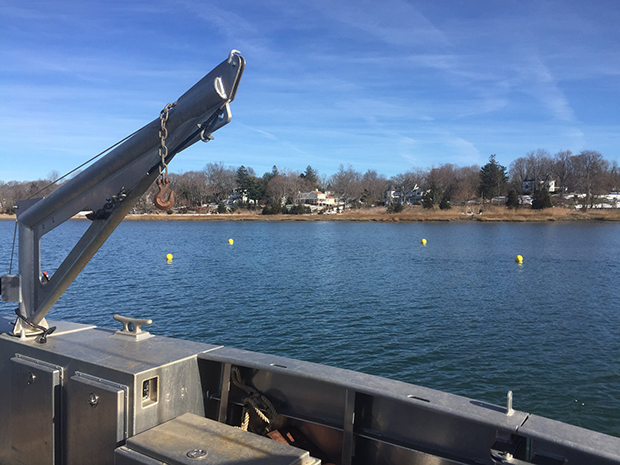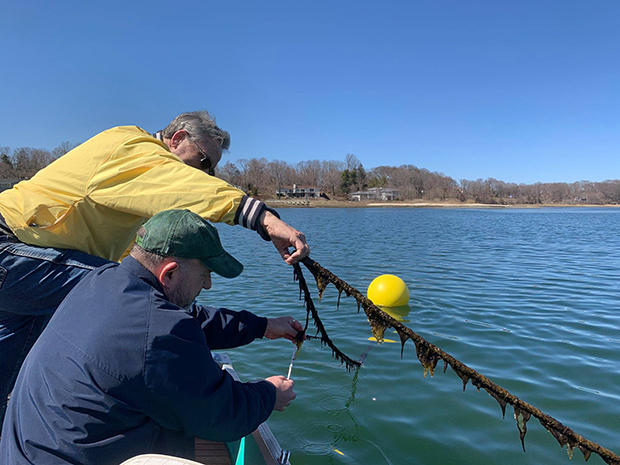Sugar Kelp Project Seeks to Clean Up Long Island Waters
Sugar kelp is good for the environment. Much like oysters, it filters nitrogen and CO2 from the water, helping to reduce the harmful algae blooms and improve the overall chemistry of harbors and bays. Sugar kelp - also known as the Devils’ apron - also has nutritional value and is considered a superfood by many.
This underwater plant is, according to a NOAA website description, “a yellowish brown marine algae wildly cultivated and eaten in Asia and growing in popularity in the United States as a nutritious food high in fiber, vitamins, and minerals.” It has also long been used as a sweetener and is often used in food and cosmetics as a thickening and gelling agent.
In December 2020, Setauket Harbor Task Force (SHTF), a non-profit environmental association that promotes clean water and resilient harbors, with the assistance of the Town of Brookhaven Bay Constables, dropped mooring anchors and set up the kelp growing field’s area in Setauket Harbor, according to a press release from Brookhaven Town. In January 2021, they attached the kelp seedlings to 100-foot lines just under the surface of the water between buoys in Setauket Harbor.

SHTF sugar kelp lines in the northeast part of Setauket Harbor. The two 100 ft lines are marked with yellow floating markers. Photo Setauket Harbor Task Force Facebook page.
According SHFT, the program's goal is to promote sustainable aquaculture in local harbors and bays and also to clean up the water by removing excess nitrogen and CO2 from the water.
This May, Brookhaven Town Supervisor Ed Romaine and Town Councilmember Jonathan Kornreich were at Port Jefferson Harbor during the harvest of Sugar Kelp with members of SHTF, including Trustee George Hoffman (left) and Chairwoman Laurie Vetere.

Checking on the sugar kelp harvest in early Spring. Photo Setauket Harbor Task Force Facebook page.
SHTF and Brookhaven Town Bay constables harvested over 200 lbs. of sugar kelp which was placed in mesh bags and weighed. It was then sent to Stony Brook University marine sciences labs for analysis.
